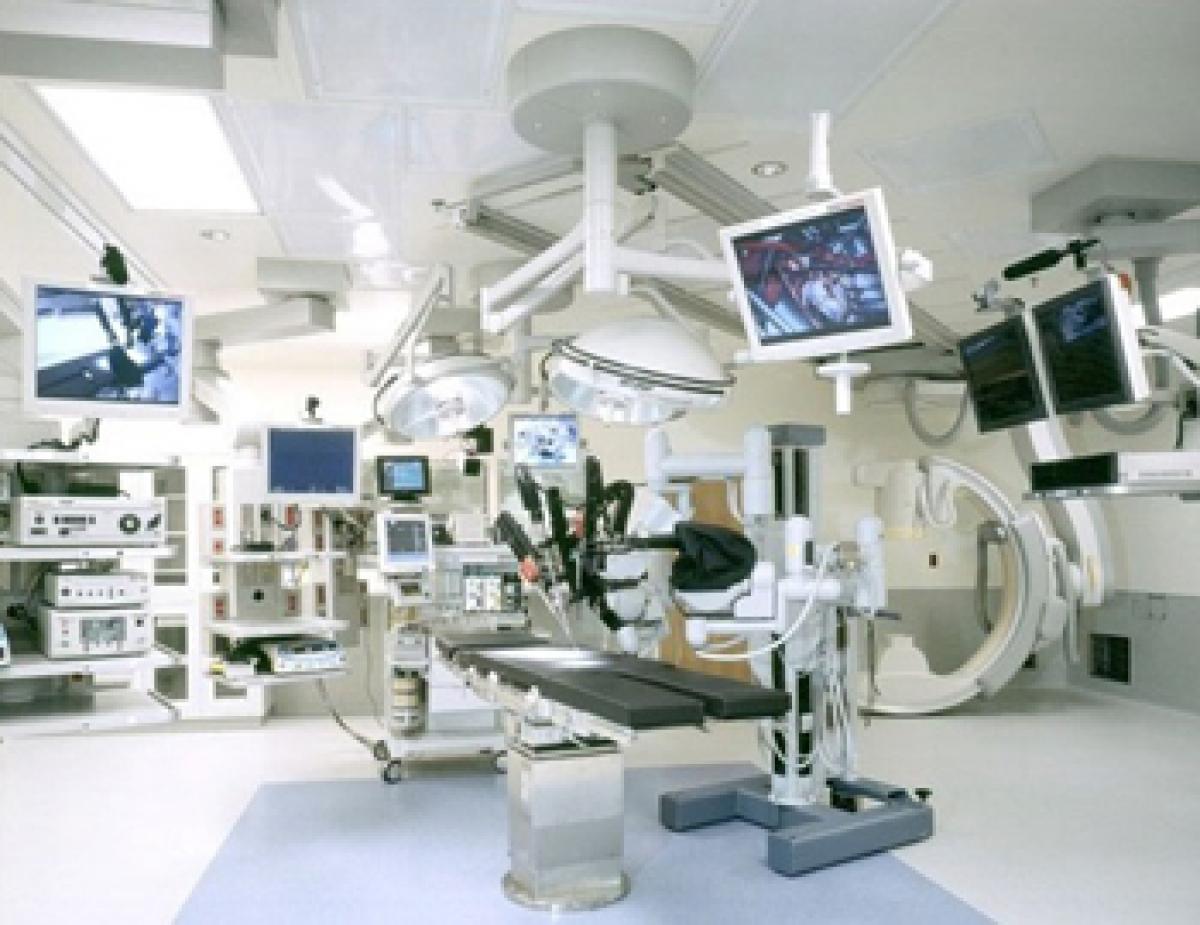Live
- Over 7,600 Syrians return from Turkiye in five days after Assad's downfall: minister
- Delhi BJP leaders stay overnight in 1,194 slum clusters
- Keerthy Suresh and Anthony Thattil Tie the Knot in a Christian Ceremony
- AAP, BJP making false promises to slum dwellers for votes: Delhi Congress
- 'Vere Level Office' Review: A Refreshing Take on Corporate Life with Humor and Heart
- Libya's oil company declares force majeure at key refinery following clashes
- Illegal Rohingyas: BJP seeks Assembly session to implement NRC in Delhi
- Philippines orders full evacuation amid possible volcanic re-eruption
- Government Prioritizes Welfare of the Poor, says Dola Sri Bala Veeranjaneyaswamy
- Two Russian oil tankers with 29 on board damaged due to bad weather
Just In

The Central government has come out with a draft National Medical Device (NMD) Policy 2015, and sought comments and suggestions from the public. Preamble to the policy explains that large multinational companies are controlling the domestic market, while Indian companies are small and medium category.
 The Central government has come out with a draft National Medical Device (NMD) Policy 2015, and sought comments and suggestions from the public. Preamble to the policy explains that large multinational companies are controlling the domestic market, while Indian companies are small and medium category. It also mentions that there is no regulation in India of medical devices industry. A vast majority of Indians do not have access to medical devices and the government must address this issue.
The Central government has come out with a draft National Medical Device (NMD) Policy 2015, and sought comments and suggestions from the public. Preamble to the policy explains that large multinational companies are controlling the domestic market, while Indian companies are small and medium category. It also mentions that there is no regulation in India of medical devices industry. A vast majority of Indians do not have access to medical devices and the government must address this issue.
It could also play a regulatory role in ensuring quality and affordable prices. At present, Central Drugs Standard Control Organisation (CDSCO) is the main regulatory body in India, with a few medical devices regulated under the Drugs and Cosmetics Act. The core objective of the draft policy is to strengthen domestic production of medical devices. Towards this, the government intends to constitute a National Medical Device Authority (NMDA). It would be a single window mechanism for medical device industry.
It proposes medical device testing centres under PPP mode, and recognition of centres of excellence for technical support. It also proposes inclusion of a separate list of medical devices under the Essential Commodities Act, and plans to bring out a Medical Devices Price Control Order. This policy is more about building domestic medical device industry through FDI and other means of investment. It is not about patients, and ensuring protection of consumers. This is a serious imbalance here.
The policy should include goals of ensuring access to new and improved medical devices and prevention of devices that are not safe and effective from entering the market. US, Germany and Japan are major exporters of medical devices. The US medical device industry is the world leader with 45 per cent global market share. Research in the US indicates that for India a better option would be to enable a wider mix and a tapering structure for medical devices industry, which responds to different categories of patients.
India is a top market for medical devices in the world, of Rs 13,000 crore in 2009‐10. With the exponential growth of private health service providers, use of high-tech medical devices is increasing. Most domestic manufacturers produce low technology, disposables and supplies, with a value of Rs 312 crore (2009‐10). In 2012, the total value of imports of medical devices were valued at Rs 13,520 crore and exports were about Rs 6,362 crore. Indian policy does not have any innovative provision that enables the growth of small companies.
This draft policy is completely silent on regulating trade and imports. Data on usage by hospitals, quality control, raw material supplies to equipment and labs is not available. End-use pricing is not under regulation. A widely held perception that hospitals and doctors cheat on imported devices in terms of price and quality has to be addressed, to build confidence among patients. In addition, the list of medical devices under current regulation is not detailed, leaving out many of the devices. A Public Health Foundation of India report recommends a definition of the industry and better data collection.
Surprisingly, draft policy has not suggested any method of defining medical devices. Current regulatory framework is still inadequate. At present, only 14 types of medical devices are regulated. A comprehensive regulatory regime is required. NMD Policy 2015 does not mention clinical trials, a major grey area because of the inadequate regulatory framework. Defects in medical devices, such as pacemakers and stents, have caused severe patient injuries and deaths.
In the US, most moderate- and high-risk devices must obtain the FDA’s permission prior to marketing. Government should involve various stakeholders in consultations over the NMD Policy 2015, including Doctors, consumers, Hospitals, R & D institutes, banks and other financial institutions, including State governments and other relevant Departments. State-level consultations have to be held. (The writer is a public policy expert and can be reached at [email protected])
By Narasimha Reddy Donthi

© 2024 Hyderabad Media House Limited/The Hans India. All rights reserved. Powered by hocalwire.com







